Plunge into the depths of the 9th hour in the Bible, where moments of darkness and revelation intertwine, inviting a deeper understanding.
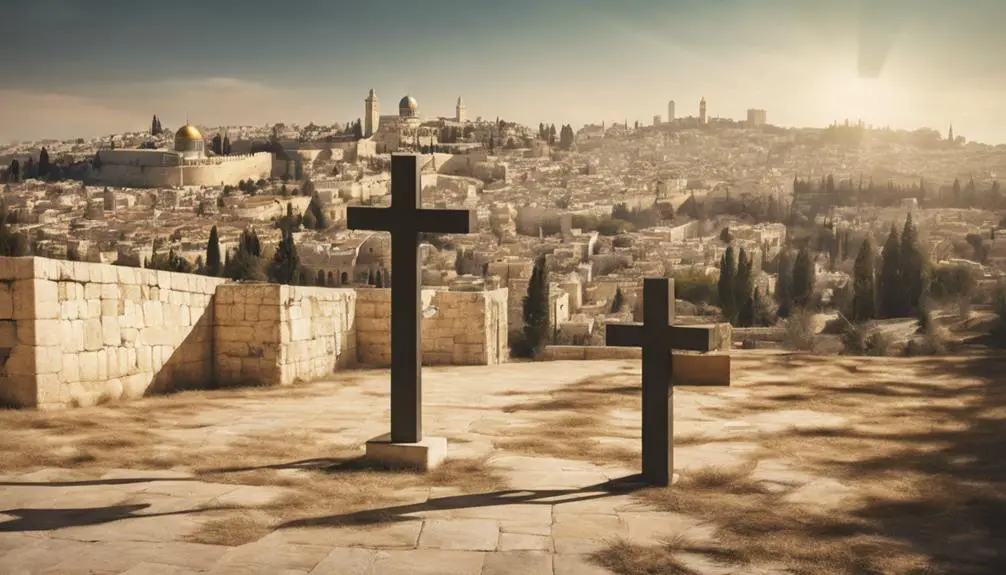
The 9th Hour in the Bible
Imagine you're standing in the midst of ancient Jerusalem, witnessing the sky darken at the 9th hour, marking the moment of Jesus' crucifixion. This hour holds profound significance across several biblical narratives, not just for its historical importance, but for the symbolic messages and revelations it carries.
Beyond the crucifixion darkness, instances like Peter's rooftop vision further underscore the 9th hour as a pivotal moment of divine intervention and revelation. As you explore this topic, you'll uncover layers of meaning that extend beyond the surface, offering insight into how these moments shape the fabric of biblical history and its enduring lessons.
Key Takeaways
- The 9th hour marks significant biblical events, symbolizing divine intervention and fulfillment of prophecy.
- It serves as a pivotal moment for divine communication, often featuring angelic appearances and celestial messages.
- This time is deeply symbolic, representing transformation, revelation, and the breaking down of barriers in biblical narratives.
- The 9th hour underlines the interplay between light and darkness, symbolizing spiritual enlightenment and the finality of Christ's sacrifice.
Significance of the 9th Hour
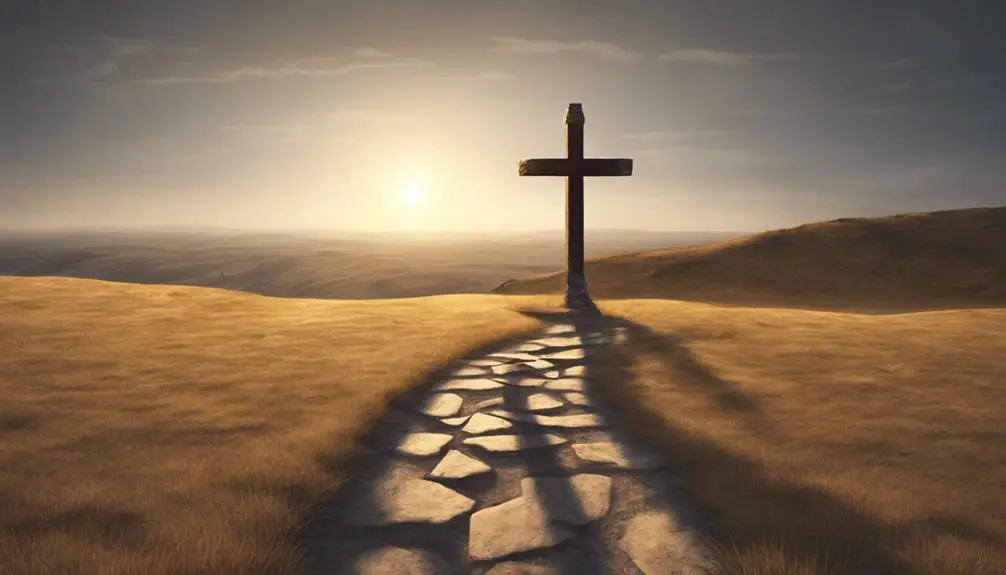
The 9th hour in the Bible carries profound theological significance, marking moments of divine intervention and fulfillment of prophecy. You'll find that this particular time isn't chosen at random; it's deeply rooted in Jewish tradition and religious practices, specifically tied to Temple prayers and healing miracles. Traditionally, the 9th hour, or 3 p.m., was a pivotal time for prayer in the Temple in Jerusalem, a practice that underscored its spiritual importance.
Analyzing the events tied to this hour, you'll notice a pattern of significant biblical occurrences that underscore its importance. For instance, the Acts of the Apostles records a notable healing miracle performed by Peter at the 9th hour, which not only demonstrates the power of faith but also aligns with the time of day dedicated to Temple prayers. This juxtaposition of prayer and divine intervention highlights the 9th hour as a moment when heaven and earth intersect, emphasizing its significance beyond mere coincidence.
In scholarly terms, the recurring theme of the 9th hour as a time of divine action and fulfillment of prophecy suggests a deliberate narrative choice. It's a period rich with theological layers, inviting a deeper examination of how timing within the biblical text serves to underline moments of divine presence and intervention. By aligning critical events with the 9th hour, the biblical authors weave a complex tapestry that reinforces the sacredness of this time, encouraging believers to perceive it as a window into the divine.
Hence, when you explore the significance of the 9th hour, you're delving into a tradition that spans centuries, integrating Temple prayers with moments of profound healing and divine action. This analysis sheds light on how time itself is utilized in scripture to highlight moments of spiritual significance, inviting a reflective engagement with the text.
The Crucifixion Darkness
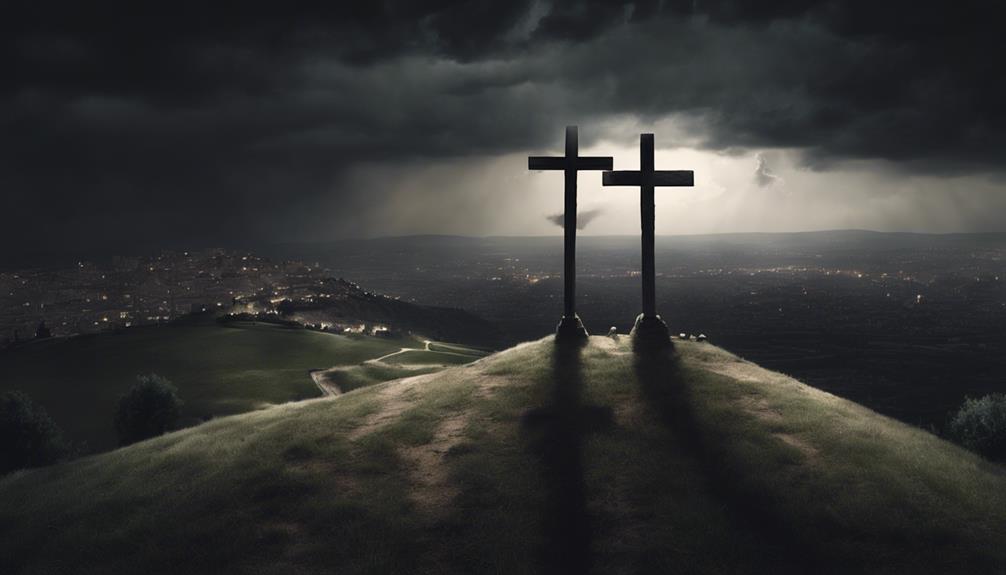
Diving into the narrative of the Crucifixion, you'll encounter a profound phenomenon: darkness enveloped the land for three hours, starting at the 9th hour, marking an extraordinary moment of cosmic significance in biblical history. This event, often termed the Crucifixion darkness, has sparked considerable interest and debate among scholars, theologians, and scientists alike. It stands as a pivotal moment that intertwines divine intervention with natural occurrences, challenging our understanding of historical and astronomical possibilities.
The solar eclipse theory emerges as a significant explanation for this darkness. Some proponents suggest that a natural eclipse could have caused this phenomenon. However, this theory encounters substantial challenges, primarily because a solar eclipse's total phase typically lasts for a maximum of 7.5 minutes, far shorter than the three hours documented. Additionally, the Jewish Passover, when the Crucifixion is believed to have occurred, aligns with a full moon phase, making a solar eclipse astronomically impossible due to the moon's position opposite the sun.
Debates on the historical accuracy of the Crucifixion darkness delve into the realm of historical documentation and astronomical records. Critics argue the lack of contemporary accounts outside biblical texts raises questions about the event's veracity. In contrast, supporters highlight the symbolic significance of darkness in biblical literature, emphasizing its role as a divine marker of monumental events rather than a purely historical record.
This discourse illustrates the intricate balance between faith, history, and science. It underscores the complexities in deciphering an event that resides at the intersection of documented history and theological symbolism.
Peter's Rooftop Vision
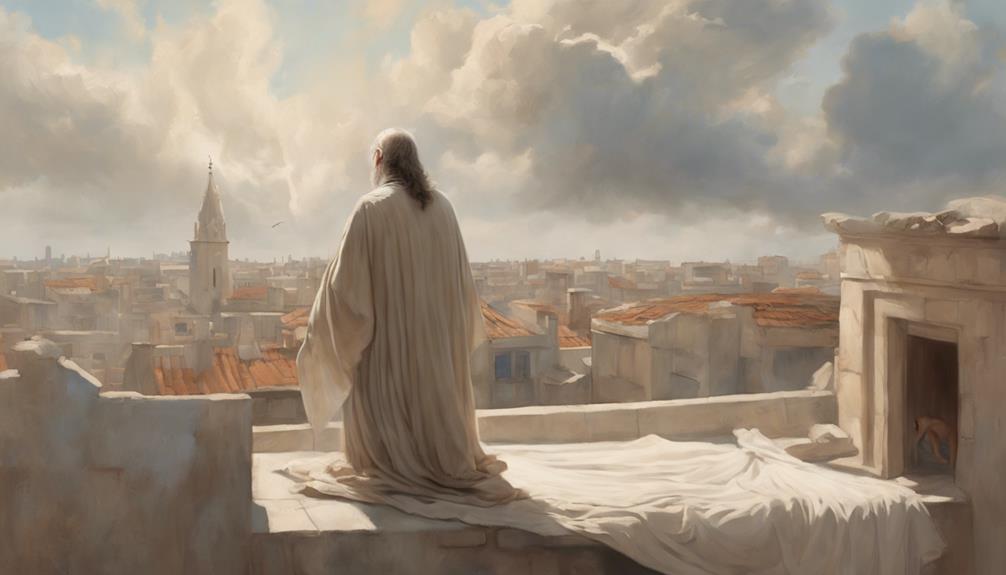
Shifting our focus from the cosmic phenomenon of the Crucifixion darkness, we now explore Peter's rooftop vision, a pivotal moment that illustrates the expansion of the early Christian church's mission beyond its initial Jewish boundaries. This narrative, deeply rooted in cultural context and dietary laws, serves as a critical juncture in the New Testament, symbolizing a universal call to inclusion.
You'll find that Peter's vision, as recounted, underscores a significant theological shift. It wasn't merely an isolated spiritual experience but a directive that challenged the existing boundaries set by Jewish dietary laws. These laws, integral to Jewish identity and religious practice, distinguished clean from unclean foods, directly influencing social interactions and religious community boundaries.
Peter's vision on the rooftop, involving a sheet descending from heaven filled with various animals, represents a divine overturning of these dietary restrictions. The voice instructing Peter to 'kill and eat' signifies a radical departure from traditional observance, suggesting that what God has cleansed, no one should call common or unclean.
Analyzing this moment, it's clear that the vision wasn't just about food but symbolized the inclusion of Gentiles into the Christian community. This was a groundbreaking development, as early Christianity was predominantly a sect within Judaism. The vision thus serves as a divine endorsement for the mission to the Gentiles, effectively erasing the cultural and religious barriers that had previously defined the early church's evangelistic efforts.
In essence, Peter's rooftop vision encapsulates a transformative moment in Christian history, where the adherence to Jewish dietary laws and cultural distinctions gives way to a more inclusive understanding of community and mission.
Other Biblical References
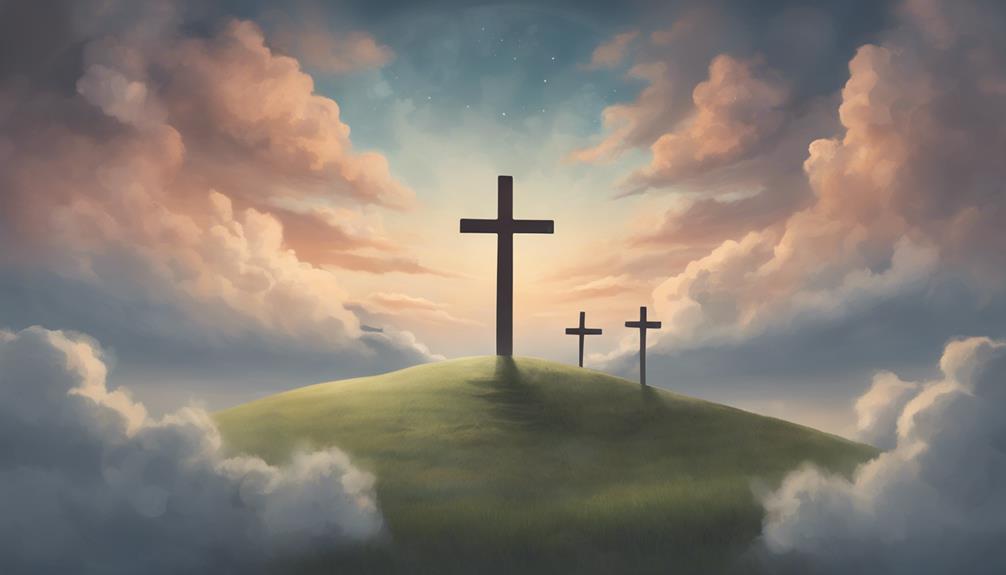
Exploring further, we encounter other biblical references that illuminate the theme of inclusivity, mirroring the radical shift seen in Peter's rooftop vision. These references, while varied, collectively underscore a broader, more inclusive understanding of community and worship, pivotal to the early Christian identity.
- Temple Prayers: Traditionally, the ninth hour was a significant time for prayer in the Jewish Temple (Acts 3:1). This practice, deeply rooted in Jewish tradition, was embraced by the early Christians, signifying continuity yet reformation. It's at this hour, in the context of prayer, that Peter heals a lame man, illustrating the breaking down of physical and spiritual barriers.
- The Pentecost Event: Occurring fifty days after Passover, Pentecost marks a pivotal moment in Christian history (Acts 2). While not directly linked to the ninth hour, the event's spirit of inclusivity, with the Holy Spirit enabling the apostles to speak in different tongues, reflects the broadening of the Gospel's reach, akin to the inclusivity seen at the ninth hour.
- Cornelius's Vision: In Acts 10, Cornelius, a Gentile, receives a vision that leads him to Peter. This interaction further cements the theme of inclusivity, showing the divine message reaching beyond Jewish boundaries.
- The Early Church's Gatherings: The early Christians' practice of gathering for prayer and breaking of bread, regardless of the hour, emphasizes a community defined not by temporal constraints but by shared faith and inclusivity.
These instances, rich in symbolism and theological depth, reveal a dynamic process of transformation within the early Christian community, centering around inclusivity and the breaking down of longstanding barriers.
Symbolism and Interpretation
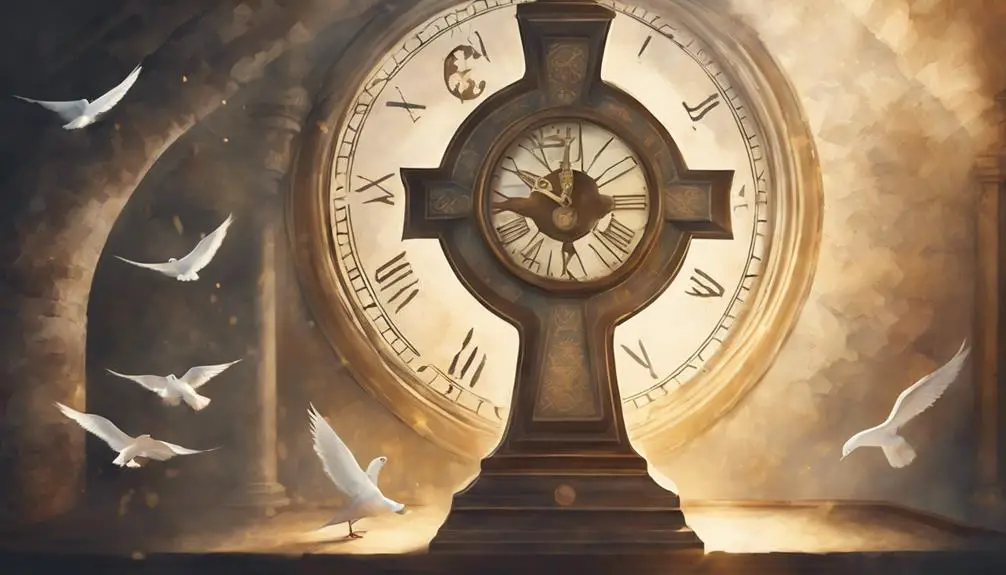
Frequently, the symbolism inherent in biblical narratives offers profound insights into the texts' deeper meanings, challenging you to consider the multifaceted layers of interpretation. The 9th hour, a time mentioned in various biblical contexts, serves as a rich focal point for such an exploration. This period, occurring in the late afternoon, is often associated with significant biblical events, where daylight phenomena and angelic appearances frequently serve as symbols of divine intervention and revelation.
Daylight phenomena, for instance, carry profound symbolic weight. The fading light of the 9th hour can represent the transition from knowledge to understanding, or from life to death, offering a metaphorical commentary on spiritual enlightenment or the finality of Christ's sacrifice. This time of day, then, isn't just a chronological marker but a narrative device that underscores the interplay between light and darkness, both physically and spiritually.
Angelic appearances at the 9th hour further enrich the symbolic landscape. These celestial messengers often signify pivotal moments of divine communication, embodying the bridge between the divine and the mortal realms. Their interventions at this specific hour highlight moments of divine grace, guidance, or judgment, emphasizing the 9th hour's role as a conduit for revelation and transformation.
Frequently Asked Questions
How Did the Concept of the 9th Hour Evolve in Jewish and Early Christian Traditions Outside of the Biblical Texts?
You're exploring how the 9th hour's significance grew in traditions outside the Bible.
Focusing on Jewish numerology and Early Christian rituals.
This concept, rooted in ancient practices, evolved as Jewish communities attributed deep spiritual meanings to numbers, linking the 9th hour with significant events.
Early Christians, absorbing this tradition, wove the 9th hour into their rituals, marking it as a pivotal time for prayer and reflection, thus enriching its spiritual significance.
Are There Any Non-Canonical Texts or Apocryphal Stories That Mention the 9th Hour, and What Do They Say?
You're diving into texts beyond the traditional canon, searching for mentions of the 9th hour. In this exploration, you'll encounter Gnostic interpretations and tales of Midday miracles woven into apocryphal stories.
These texts offer a rich tapestry of beliefs and narratives, shedding light on how this specific time of day held spiritual significance, echoing through early Christian and Jewish traditions.
Analyzing these stories provides a deeper understanding of their cultural and religious context.
How Has the 9th Hour Been Observed or Commemorated in Christian Liturgical Practices Throughout History?
You're diving into a time capsule, exploring how 9th Hour rituals have been a cornerstone in Christian liturgy. Historically, this time's marked by profound Liturgical symbolism, reflecting Christ's crucifixion moment.
It's not just a nod to tradition; it's a deep, analytical dive into faith's essence, where every gesture and prayer at this hour is steeped in millennia of belief. This practice showcases a scholarly fusion of devotion and historical continuity.
What Are the Scientific Explanations or Historical Events That Might Account for the Reported Darkness at the Crucifixion Around the 9th Hour?
When exploring explanations for reported darkness during a significant event, two theories stand out: a solar eclipse and volcanic ash.
A solar eclipse, while an astronomical event, doesn't align precisely with historical timelines due to its predictability and timing.
Conversely, volcanic ash, resulting from eruptions, could feasibly spread across vast distances, obscuring sunlight. This phenomenon, backed by geological evidence, offers a plausible explanation for such widespread darkness.
How Do Different Christian Denominations Today Interpret the Significance of the 9th Hour, and Does It Influence Their Prayer or Worship Times?
Ironically, you're diving into how the 9th hour folklore has evolved without even touching its biblical roots.
Christian denominations today vary widely in their interpretations, but many see it as a pivotal moment for reflection or prayer.
It's not just about history; it's about how these modern interpretations shape their daily worship rhythms.
Whether it influences prayer times significantly depends on the denomination, blending ancient tradition with contemporary practice in a detailed, scholarly dance.
Conclusion
In conclusion, you've seen how the 9th hour holds profound significance within the biblical narrative, marking moments of darkness, revelation, and transformation.
Despite skepticism about its symbolic interpretation, envision it as a divine crossroads where human and divine realms intersect, offering insights into God's plan.
This hour, rich in symbolism, beckons you to delve deeper into its spiritual essence, challenging you to explore its multifaceted implications on faith and understanding in a scholarly, analytical manner.

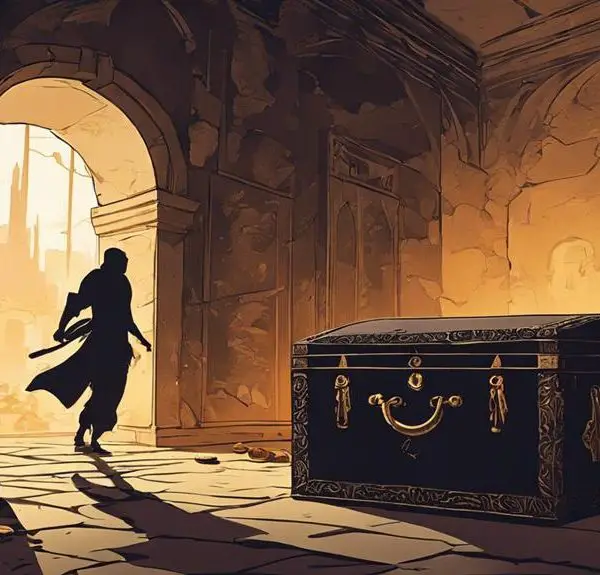
Sign up